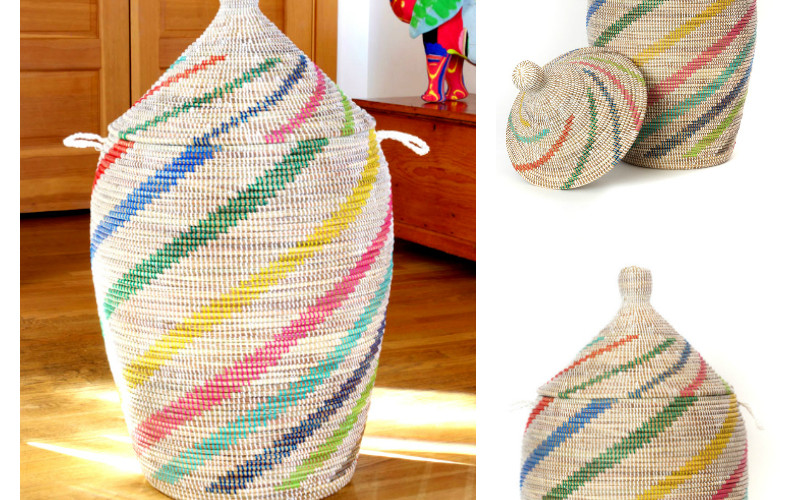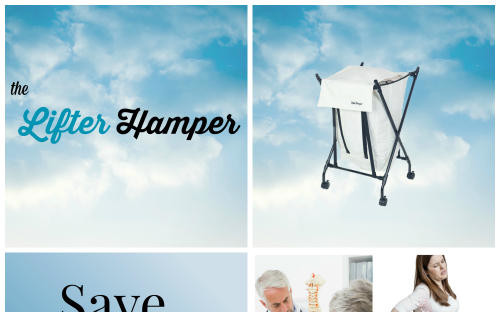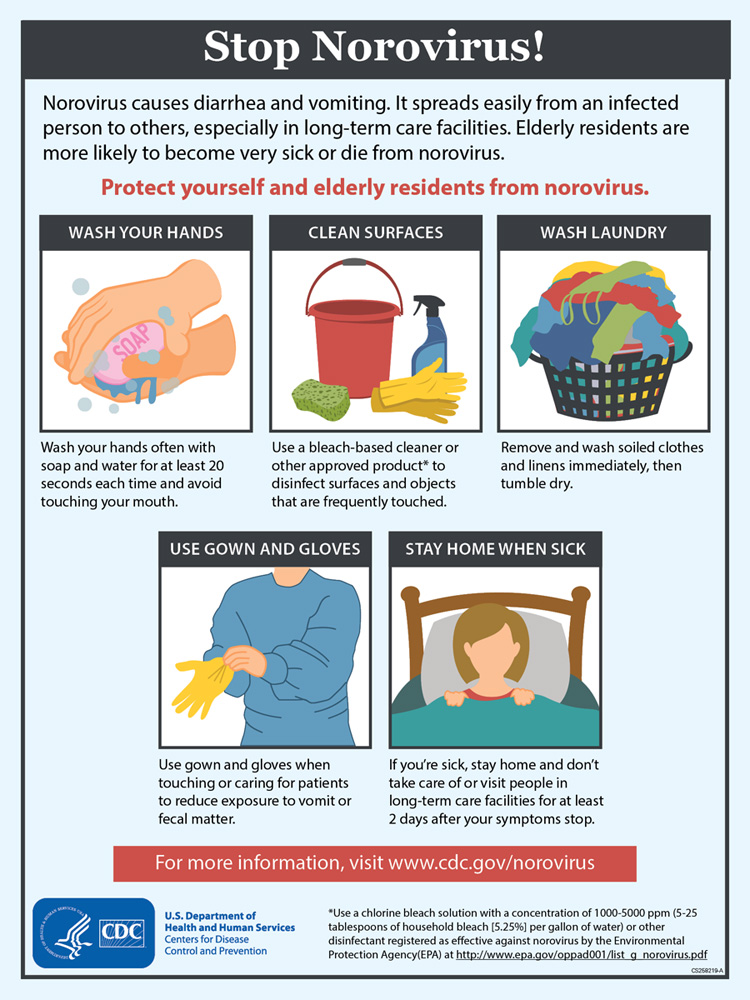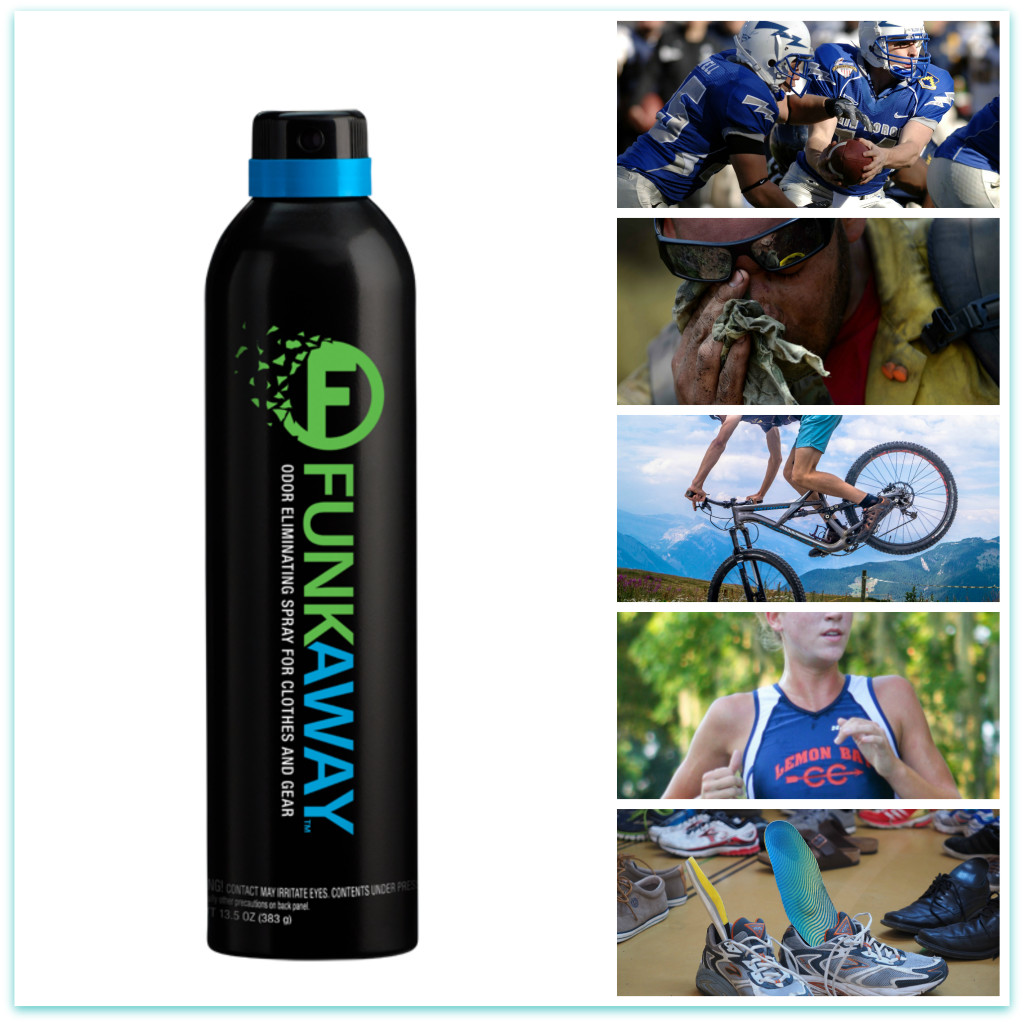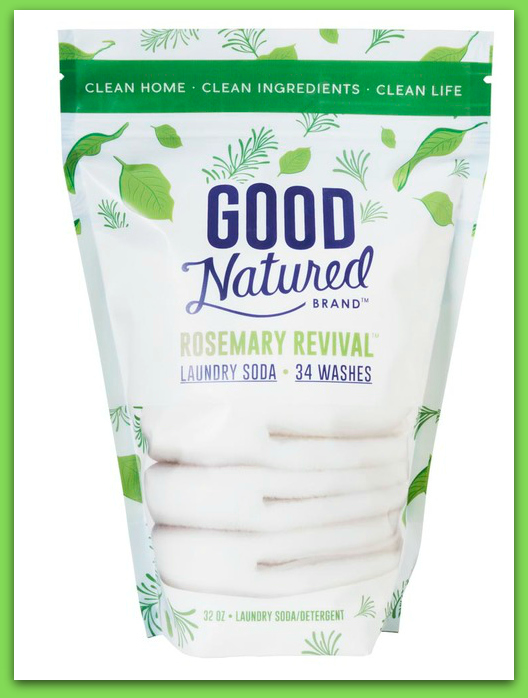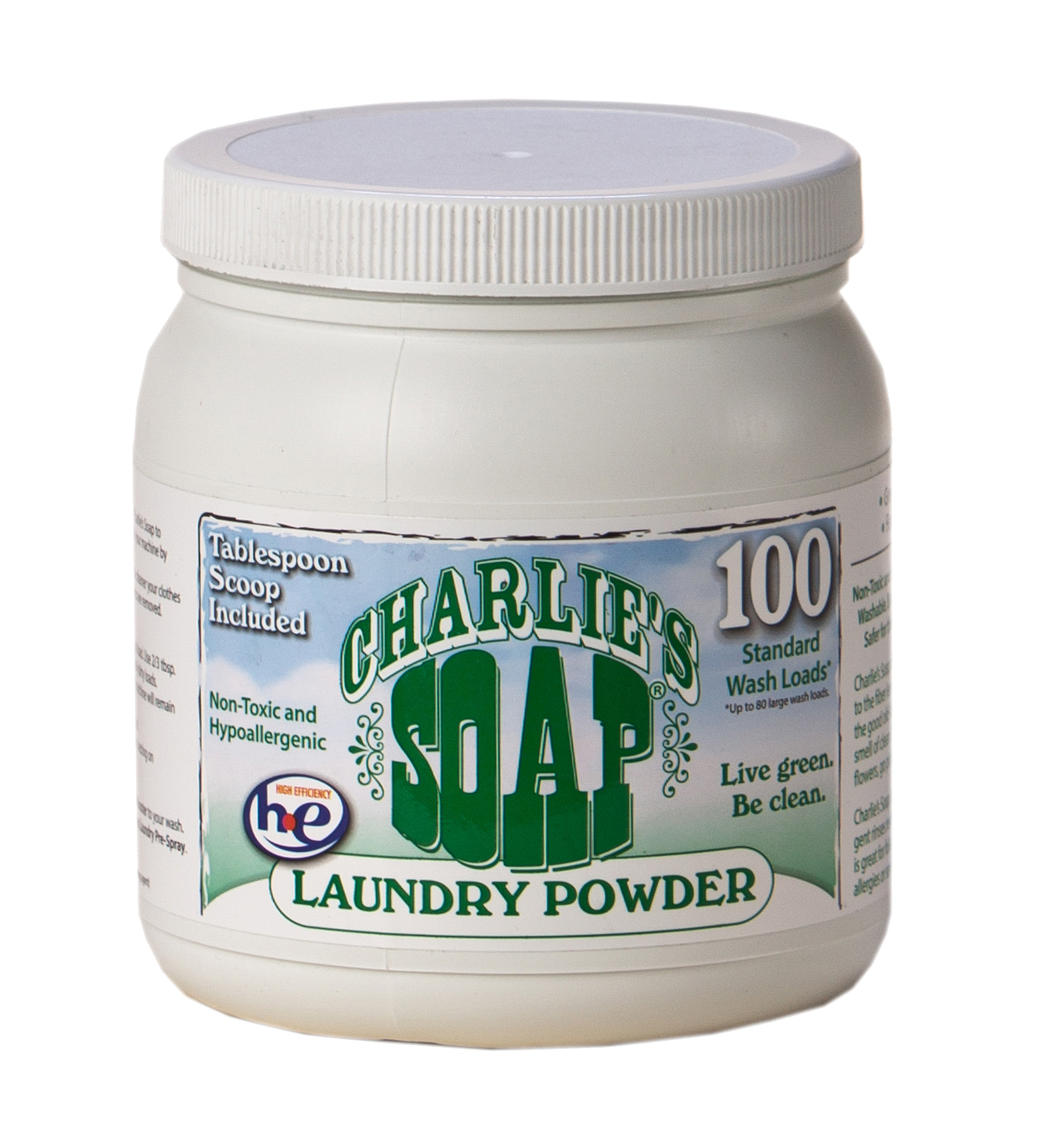Keeping Your Laundry Room Safe From Norovirus
Featured
Norovirus or the stomach flu delivers discomfort to people worldwide. Each year 22 million people become infected by the norovirus just in the United States. Norovirus is the most common type of gastroenteritis. It is a condition that causes inflammation of the stomach and intestines. Virus symptoms include painful stomach cramping, throwing up or diarrhea. Norovirus transmission occurs by person-to-person contact, via contaminated food or water and by touching infected surfaces such as those in the laundry room.
Norovirus is highly contagious. If you, a family member or a roommate contact norovirus it is very important to sanitize and disinfect your entire household. This must include disinfecting laundry properly to avoid re-infection.The Public Health Agency of Canada warns that the virus can persist for days on surfaces. On hard surfaces the virus can thrive for up to 12 hours, and on carpet an astonishing 12 days.
Important Safe Laundry Tips When Dealing With Norovirus
Clothing or linens that been soiled with feces or vomit should immediately be cleaned. To lessen norovirus contamination risks, disposable gloves should be used while handling the dirty laundry. Carefully remove and dispose quickly of excess waste prior to placing laundry in the machine. Take precautions to keep the infected laundry separate from everyday laundry. Norvirus can easily become airborne. Avoid shaking the laundry or conducting any unnecessary movement of the soiled items.
Use a washer setting that will provide the maximum number of cycles. Do not overload the washing machine with laundry. Articles of laundry should be able to freely move within the wash cycle without undue bunching. When laundry care instructions allow utilize the warmest water setting possible. Hot water is best. Norovirus is most effectively killed by heat and products containing chlorine bleach, in particular particularly sodium hypochlorite. Along with laundry detergent, utilize chlorine-based-bleach per usage directions and advised care label instructions. Color-safe-bleaches ,which typically contain hydrogen peroxide, will not kill the norovirus. Laundry must be fully dried, and not damp to kill the virus. Avoid hang-drying. Use the hottest dryer setting that your laundry will tolerate.
Any surfaces that the soiled laundry or the person handling the laundry has touched should be cleaned by using bleach or a bleach-based household cleaner. This means disinfecting all impacted: hampers,laundry baskets, laundry room floor, folding surfaces, counter-tops, tops of washer and dryer, laundry room door handles and light switches. The CDC suggests a solution made with 5 tablespoons to 1.5 cups of household bleach per 1 gallon of water. As an added precaution after washing the soiled laundry, an empty hot water wash cycle with bleach should be run to clear any norovirus remnants in your washing machine.
After touching contaminated laundry hands should be thoroughly washed with hot water and soap. Hands should also be washed after loading wet laundry from the washing machine to the clothes dryer. Proper hand washing involves using hot water and soap. Hands should be scrubbed and rinsed for a full thirty seconds. Attention should be paid to fingernails. Additionally jewelry, rings and bracelets, should be removed and cleaned. Alcohol based gels will lessen norovirus, but usage is not as effective as vigorous hand washing.
Hopefully, you and your family will avoid having to ever experience a bout with the norovirus. Vigilant hand washing both at home and in public is a good preventative first step. However if you or a member of your household has the misfortune of catching the norovirus avoiding re-contamination, such as via soiled laundry, is key to restoring health. For further information on norovirus, including the new strains of norovirus, you can visit the Center For Disease Control.
Also Read Our Article on Preventing Germs And Bacteria in The Laundry Room for more Safe Laundry Tips.
Dryer Safety Tips – Avoid a Laundry Fire
Featured

US Government statistics show that 2,900 clothes dryer fires occur in the United States every year. Annually, these dryer fires are responsible for deaths, injuries and $35 million in property loss. To keep your family safe from laundry room fires, attention must be made to the proper installation, usage and maintenance of the clothes dryer in your home. Here is a listing of safety laundry tips from the US Fire Administration related to reducing fire hazards in clothes dryers.
Clothes Dryers Dos For Prevention
- Hire a qualified appliance professional to install your clothes dryer.
- Mandatory cleaning of the lint filter after each dryer cycle. Routine cleaning of the backside of the dryer where lint and dust can collect. Every 6 months, physically clean the lint filter with a nylon brush — more often if filter becomes more frequently clogged.
- Visually inspect the venting system behind the dryer for any signs of damage, crushing or restriction.
- Observe the outside wall dampers. External dryer dampers should be equipped with a covering that shields from rain, snow and dirt. Wire screens or cloth should never be used as covering because they can attract and trap lint which will clog the dryer vent.
- Outdoor dryer vent coverings should open when the clothes dryer is operating.
- Both the interior of the dryer and the dryer vent system should be periodically cleaned (or repaired) by a professional appliance repair service. A sign of a clog, is a dryer that is taking longer to dry laundry.
- All coiled-wire foil or plastic dryer venting should be immediately be replaced with rigid non-ribbed metal duct.
- Gas powered dryers should annually be inspected by a professional. This will insure that gas the gas line and connection are free of leaks.
- Beware of critters. Routinely check the outside dryer vents for nests of small animals and birds and insects. Promptly remove if found.
- Verify that you are using the correct electrical plug and outlet as per your clothes dryer instructions. Double-check all connections.
- Actually read and observe the dryer manufacturers’ instructions and warnings in the use and care manual provided at purchase.
- Keep the area around the clothes dryer free of items free of items that can burn.
- When you away from home for a long period of time (such as a vacation or business trip) unplug or disconnect the clothes dryer.
Clothes Dryer Dont’s For Fire Prevention
- Never operate a clothes dryer without a lint filter or operate with a lint filter that is damaged, loose or clogged.
- Never dry rubber, foam or plastic in the clothes dryer. This includes bathroom rugs lined with such backing.
- Never dry any article with explicit care instructions that state “Dry away from heat”.
- Never dry glass fiber materials.
- Never dry in a clothes dryer items that have come into contact with flammable items such as: alcohol, cooking oils, gasoline and the like. Such items should be dried outdoors or in a well-ventilated room away from any heat source.
- Never leave a clothes dryer running when the home will not be occupied.
- Never leave a clothes dryer on when you are sleeping.
Establishing the above dryer safety guidelines will help keep your family and home safe from the hazards of clothes dryer fires. These safe laundry tips are easy to implement. Don’t delay, start making your laundry safer starting today.
Welcome To Safe Laundry Tips
Featured
We love Laundry! Let us help you with your laundry. We feature a full array of laundry products: laundry baskets, small laundry appliances, laundry detergents, laundry room organization items and other laundry accessories — laundry innovations to time-tested laundry products. Learn helpful laundry tips to keep your laundry room safe and free from hazards while doing laundry. Plus, find laundry advice to achieve energy savings, information on laundry coupons and laundry news about contests. Decorate your laundry room with our laundry decor items: laundry room signs, decals, rugs and more. Learn how to do laundry the right way. Happy laundering!
Germy Laundry Can Make You Sick
Featured
You have just finished the laundry. But, are you confident that your laundry is truly clean?
According to Dr. Charles Gerba, “America’s Germ Guru”, the laundry room is full of dangerous germs. Gerba, an environmental microbiologist at the University of Arizona, has tested some American laundry rooms. Randomly swabbing the inside of washing machines, Gerba wanted to know how effective washing machines were at ACTUALLY cleaning germ-laden laundry. Was it a safe bet that soapy solutions, rinses and agitation were truly enough to conquer germs, bacteria and viruses?
The answer was a startling NO. Over 60% of the tested washing machines were positive for coliform bacteria —a sign of fecal contamination. Staph, was present in 20% of the machines. Underwear, sponges and dish cloths were identified as the primary source of contamination.
The second part of Gerba’s dirty laundry experiment involved the direct observation of how E.Coli, Salmonella and Mycobacterium Fortuitium would survive in a typical warm water wash setting and an average drying cycle.
Gerba’s results demonstrated that a warm wash cycle did NOT rinse away these germs. The laundered items and the washer basin were still infected by dangerous pathogens. More troubling was that subsequently laundered loads, also, showed signs of contamination.
Housekeeping manuals have long taught that a hot dryer cycle kill germs remaining after the wash cycle. However, Gerba demonstrated that as mainly myth. A hot dryer cycle did kill E.Coli remnants but Salmonella and the Mycobacterium Fortuitium remained. A 43 minute cotton setting and a 23 minute permanent press dryer setting was used — simulating two popular dryer options.
This study shows how unrealistic cold water washes are for certain laundry applications. Remember, the results were observed in warm water settings — cold water would be even less effective in killing germs. There have been increased environmental campaigns to get consumers to utilize cold water settings to preserve energy needs. This works on the garden-variety-dirty-laundry, but is dangerous and unhealthy to apply to all laundry needs. Underwear, towels, bed linens, cloth diapers, kitchen towels, cleaning rags and pet items all can harbor unhealthy bacteria, fungus, and viruses. Family members with colds or the influenza virus can contaminate clothing and linens. (For washing laundry infected by Norovirus read this article, here).
We commit to the chore of laundry, because we desire clothing and linens that are fresh and sanitary. Laundered items that still harbor germs pose a health threat. This danger is most pronounced to those with compromised immune systems, the pregnant, babies, and the elderly.
Here are practical safe laundry tips to reducing germs in laundered clothing and laundry appliances.
Hand Washing
Gerba wants consumers to avoid cross contamination in the laundry room. After sorting soiled laundry, loading dirty laundry into the washing machine, and removing washed laundry from the washer into the dryer —- your hands should be washed.
Underwear
The last load that you launder should be a solo load of underwear. Do not mix underwear in with other laundry items to reduce the transmission of E-Coli and other fecal bacteria. Gerba told Fox News “If you wash a load of undergarments, you transfer about 500 million E. coli bacteria to the machine.” He recommends using a hot water setting with color safe bleach to achieve a true healthy clean.
Towels, Bed Sheets and Kitchen Linens
Bath towels, bed linens and kitchen cloths all can harbor an assortment of germs so wash them frequently. These items should be washed in hot water and sanitized with a color-safe bleach — as label instructions warrant. Wash each of these groups of items separately. They should be fully dried before they are folded and put away. A complete hot dryer setting or full sun exposure when line drying will reduce residual germ proliferation.
Washing Machine Maintenance
Your washing machine needs to be routinely maintained. See our article on How to Clean A Washing Machine. Gerba recommends running an empty load with standard bleach once a month to rid washer of germs — calling the practice ” mouthwash for the machine”.
We hope these Safe Laundry Tips keep you and your family protected from laundry room germs. More information about germs in the laundry room can be found here .
That Funky, Musty, Stinky Washing Machine Smell
Featured
Does your washing machine smell like a skunk? Knowing when and how to clean a washing machine is key to avoiding a smelly washing machine. Both top loading and front loading washing machines can suffer from odor, mildew and mold problems if not routinely cleaned. Owners of front loading machines need to be especially vigilant due to design specifications and operating differences compared to top loading washers. It is generally recommended that the cleaning of a washing machine be performed at least monthly.
Hard water deposits, laundry detergent residue, film from fabric softeners all can accumulate within the washer machine and decrease operating efficiency. Dampness can also cause unhealthy mold and mildew within the washer bin, gaskets and hoses. Collectively, all serve to create an environment that is ripe for creating a smelly, musty washing machine.
But simply cleaning your washing machine, at routine intervals, can keep your washer operating efficiently and safely —- allowing your laundry to smell and feel wonderful.
Clean Washing Machine With Vinegar
White distilled vinegar, preferably a mild acid variety, can aid in clearing your washer of detergent debris, mineral deposits and odors.
Add a 1/4 cup of vinegar to a hot water wash cycle utilizing the longest possible rinse setting. This “wash cycle” should be free of laundry. You can decrease or increase this amount according to your level of detergent residue or mineral deposits.
Some washing machines may have certain plastic and rubber components that are sensitive to vinegar. It is best to check with the washer manufacturer to see if they recommend using vinegar in their machines to prevent a costly repair or voiding of your warranty.
Washing Machine Cleaning With Citric Acid
A 1/2 cup of Citric Acid Powder can be used in a warm water empty wash cycle to help dissolve buildup and hard water mineralization. Some appliance brands, such as Miele recommend using citric acid when cleaning washing machines over vinegar as it is less corrosive to machine parts.
Appliance products like Glisten which are formulated with citric acid are ready-made to tackle mineral deposits, rust stains and laundry detergent scum.
Attacking Washing Machine Odors with Bleach
A Whirlpool Rep, Ms. Zeiter, in a Walls Street Journal interview recommended “cleaning washers monthly using an empty hot-water cycle and…bleach ” Zeiter cautioned that not properly measuring laundry detergents and other laundry products creates a buildup of heavy residue in washing machines. Such sticky buildup can lead to a stinky washer and musty laundry.
Adding a cup of liquid bleach to an empty, hot water wash cycle is effective in eliminating collected “gunk”, mold and mildew. Allowing the wash basin to soak several hours in the brew of bleach aides in the sanitation effort
Smelly Washer Cleaner – An Easy Smelly Washer Remedy
Smelly Washer Cleaner is a specially designed cleaner that works to rid washing machines of foul odors. Smelly Washer Cleaner is an all natural, organically derived cleaner.
More Helpful Ways to Clean a Washing Machine
On front loading washing machines be certain to regularly clean the rubber door gasket. Wiping with bleach or another other type of disinfectant is helpful in ridding the area of mold and mildew. Lint filters should be emptied after to each wash to avoid moisture buildup. Also, take care to remove wet laundry promptly to avoid musty washing machine smells.
Giving your washer time to “air-out” after a cycle can also assist with the elimination of musty odors and the formation of mildew. Opening up a window or running a fan in the laundry room will help the air to circulate and minimize humidity. However, care must be exercised when young children and small pets are in the household. Open washer basins can be used as resting and hiding places, which can lead to an entrapment hazard.
If you are taking care to measure laundry products correctly, but are still finding proof of excessive detergent residue you may want to switch from a liquid detergent to a powdered laundry detergent. Some machines operate more efficiently with powdered detergents. Additionally, you may want to eliminate liquid fabric softeners as some have experienced a sticky buildup with these products.
Give your washing machine time to respond to these treatments. If you still are experiencing a smelly washing machine after cleaning your appliance it may be time to call a professional repair service. Sometimes, black mold can be harbored within an area of a washer that a washing machine cleaner can’t solve.
Knowing how to routinely clean a washing machine can help you avoid costly repair bills, preserve the life of your machine and reward you with clean, fresh-smelling laundry!
FunkAway Clothing & Gear Odor Eliminator
Get Tough with Funky Odors. Get FunkAway
It’s a little-known fact that sweat itself doesn’t stink. The odor actually comes from bacteria that’s borne from perspiration. FunkAway products utilize a unique patented compound called OM Complex™, which is designed to devour and absorb the odor on a molecular level, encasing it in an unbreakable bubble and eliminating it for good.
Break Free of the Stink With FunkAway
Use the spray on everything from hard hats, tool belts and harnesses, to hockey, football and lacrosse equipment and more. Try it on common clothing like socks, jocks, and workout gear—anything that smells after a hard day on the field, rink, court, treadmill or jobsite. Even the smelliest shoes can smell new again with FunkAway. If it can absorb sweat, FunkAway can eliminate the odor.
“We created FunkAway as a convenient, effective method to quickly remove odor caused by perspiration. Unlike other products, FunkAway is different. It doesn’t mask the odor, FunkAway eliminates it, or as we say, defunkifies it!” said Kyle Bolke, President of B2Z Products Inc., the makers of FunkAway.
There’s no use of “cover-up” fragrances to try and keep the odor from ruining everyone’s day. FunkAway doesn’t mask the odor—instead it eliminates it.
A Sample Of What Stinky Odors FunkAway Can Conquer
Smelly Shoes, Hockey Equipment, Runner’s Gear, Dancer’s Clothing, Soccer Gear & Equipment, Workout Clothing, Pet Bedding & Supplies, Lockers, Tool Belts, Work Uniforms, Automotive Upholstery, Couches, Recliners, Draperies, Hats, Gym Bags, Hampers and Laundry Bags & Baskets ,Skates,Gloves, Helmets, Protective Padding and More!
Dan Zbynski, Head of Research and Development for FunkAway. “FunkAway is scientifically formulated with a patented compound called OM Complex designed to remove smells, and make clothing and gear stench-free.”
BUY HERE FunkAway Odor Eliminating Spray For Clothes and Gear
“Alexa, ask Geneva if my laundry is clean.”
Amazon Alexa Smart Home has partnered with GE Appliances to bring hands free voice control to consumer appliances —including your laundry appliances.
The era of the Jetsons has arrived!
In 2016, Amazon developed, Alexa Skills Kit (ASK) and Alexa Voice Service (AVS), allowing developers to build Alexa skills or integrate Alexa directly into their hardware, product or service.
What is Alexa?
Alexa is the genius behind Amazon Echo, a cloud-connected speaker that offers hands-free voice control for everything from your favorite music to local weather and various alarms. Alexa has mastered over 2,000 skills and continues to incorporate more capacities, as new third parties like GE Appliances eagerly seek to connect their products to voice her capability via their hardware, product or service.
Okay. But Who/What is Geneva?
The Alexa skill built for the collaborative effort between GE appliances and Monogram® products has been given the moniker “Geneva.” Alexa device owners can use and control their GE Appliances products within their home by simply stating, “Alexa, tell Geneva I want hot water,” which will tell the connected refrigerator to get hot water ready. A few other skills include:
- “Alexa, tell Geneva to turn on Sabbath mode.”
- “Alexa, tell Geneva to preheat the oven to 350 degrees.”
- “Alexa, tell Geneva to set the oven timer for 10 minutes.”
- “Alexa, tell Geneva to set the water heater to 110 degrees.”
The Convenience Factor
For example, Instead of darting off to the laundry room, while feeding the baby, simply politely command Alexa to ask Geneva to check on your laundry. The two devices will converse with each other and then report the status to you. Simply put, the two devices are ready and able “household helpers” always ready to lend a hand and programed to please.
“We’re excited to work with GE Appliances to bring hands-free voice control to major appliances like refrigerators, ranges, dishwashers and more for the first time,” said Charlie Kindel, Director, Amazon Alexa Smart Home. “One of our goals with Alexa is to enable voice control on every device within the home, and this collaboration gets us one step closer to achieving that. We can’t wait for our Alexa customers to try it out.”
Ready to install in your home today
The complete connected Monogram and GE Appliances suite, including Café™ and Profile™ products will integrate with all Alexa-enabled devices including Amazon Echo, Amazon Tap, Echo Dot and Amazon Fire TV.
Click Here To Learn More About Alexa Enabled Devices
Good Natured Brand Laundry Detergent
Good Natured Brand Laundry Detergent Rosemary Revival
The Good Natured Brand uses only plant-based soap, biodegradable salt-based minerals, and fresh rosemary essential oil to thoroughly clean your laundry and leave it smelling fresh and natural. It’s the perfect powdered laundry detergent for sensitive noses and skin. Good Natured’s low-sudsing formula is compatible with High Efficiency washers.
INGREDIENTS: Plant-based (coconut) soap flakes, Sodium Carbonate, Sodium Bicarbonate, and pure rosemary essential oil.
Kate Perin and Lisa Hansen are the founders of Good Natured products. The company is based in Maine. Kate Perin was inspired to create this refreshing, natural product line out of a desire to keep her family safe from environmental toxins. She realized that the same diligent practices she exercised to put clean and fresh food into her growing family’s bodies, should equally apply to products that touch our skin or we breathe into our lungs.
“The fact that our products are truly natural gives us the edge. We wouldn’t be doing this otherwise. You can’t compete with the national brands on their playing field. No one is doing this without synthetic preservatives,” Perrin says. “We’re the only one, as far as I know [that will be distributed nationally]. A lot of products claim to be all natural, but they’re not. And we don’t use derivatives of essential oils, we use the actual essential oils.” (Source MaineBiz.biz)
Although the company is growing due to very positive consumer reviews and repeat business, the co-founders are still very much involved in every aspect of Good Natured Products. They are honestly committed to bringing you the best products for your home to support your own tradition of a healthy and happy lifestyle.
Purchase Here: Rosemary Revival Laundry Soda 52 load/ Washes , 32 Oz
NGREDIENTS: Plant-based (coconut) soap flakes, Sodium Carbonate, Sodium Bicarbonate, and pure rosemary essential oil.
DIRECTIONS: Use 1 scoop per load (or slightly more for heavily-soiled clothes).
WARNING: Even though this product is all-natural with no artificial fragrances, we recommend keeping it out of the reach of children and pets (as it is a soap!).
Lifter Hamper – Spring Loaded Laundry Hamper
The Lifter Hamper – A Successful ABC Shark Tank Product – A True Laundry Helper
The Lifter Hamper is your new laundry assistant. Patented spring-loaded technology allows the hamper’s base to rise from top to bottom as the hamper fulls or empties. Add laundry into the hamper it lowers. Take laundry out of the basket and the base rises. Say good riddance to uncomfortable bending and straining over a traditional laundry basket or clothes hamper. Four wheels allow for easy laundry gliding. A real back saver. The Lifter Hamper is a great modern laundry hamper for those with back discomfort, seniors, pregnant women or anyone who wants help with the laundry!
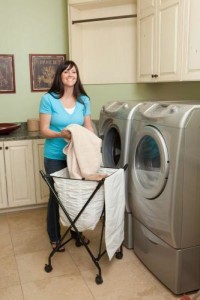
Need a Laundry Assistant? Buy the Lifter Hamper
Laundry Helpers & Laundry Decor
Featured
Charlies Soap Laundry Powder – A Laundry Favorite
Charlie’s Soap Powder Available at the Laundry Shoppe.
Looking for an old-time clean? One that doesn’t break the bank, is considerate to our planet, gentle to our skin, AND one that truly cleans your laundry? Order your first jar of Charlie’s Soap Laundry Powder and discover the clean that you have been missing.
“No More Lost Socks” Giveaway
It is a universal laundry conundrum. Domesticated dudes and divas in towns near and far collectively sigh “Wherever do socks in the laundry go?”
Conspiracy theorists will be quickly convince you that aliens, gremlins or blue fairies are behind the mysterious disappearance of your dapper argyle socks. These are the same mercurial creatures that also collect pen tops and hide the remote.
But, if you are searching for a more scientific explanation about missing socks… read further.
Reasons for Missing Socks in The Laundry
Missing socks in the laundry sometimes end up getting caught in the washing machines agitator. Small socks, such as baby clothing, can also be suctioned into the washing machine drain tubes.
Often the most probable cause of MIA socks in the laundry is static electricity generated during the drying cycle. Socks, seemingly lost, are often reunited with their mate once the laundry is folded or worn. With mischievous delights socks have a knack for hiding in the sleeve-hole or leg-hole of other laundered clothing.
But pondering where socks go is not just mindless fun, it has actually birthed a sophisticated scientific theory. Well, kinda of. The Lost Sock Fallacy postulated by Dr. Lucas Emil, showed statistically that people actually find more socks than they lose. Yet, Dr. Emil found that psychologically people generally perceive an unmatched sock in the washer as a loss from the present batch of laundry vs. a gain from a prior batch of washing.
Stop Sock Loss
At Safe Laundry Tips we believe that laundry should be fun! Safety and efficiency are a huge part of making your laundry days more enjoyable. We don’t want our readers to be saddened or frustrated by lost socks in the laundry. And, besides boarding alien space craft in search of missing gym socks can be dangerous.
We have a more effective Safe Laundry Tip to share: use Sock Locks. With Sock Locks
you can stop searching for lost socks today! Save valuable time and money with the help of Sock Locks.
Sock locks are a great way to keep your socks organized in both your washer and dryer. Not only will you not lose socks, but you won’t waste time trying searching for matching socks when folding your laundry.
Sock Locks will make you famous, sexy and rich. Okay, that is a total exaggeration. It would be true, however, to state that Sock Locks will save you from the tedium and time-loss of matching socks when doing laundry chores. Devote that valuable time to other dreamy endeavors. There is also truth that this little gadget could save you money — as you will no longer need to replace singleton socks for a proper matching set. Extra bank is always good.
We love Sock Locks so much that we are giving them away in hopes of creating good laundry karma!! To enter: Simply follow us on twitter and then tell us with a tweet where YOU think lost socks in the laundry go.
Five individual winners will randomly be chosen to win one of five eligible individual packages of Sock Locks. Contest is open only to US residents. One entry only. Prizes not claimed within a week of announcement of prize eligibility will be forfeited. Contest begins February 5th, 2013 and ends February 26, 2013 at 12:00 AM ET.
Good luck!
Keeping Your Laundry Room Safe From Norovirus
Featured
Norovirus or the stomach flu delivers discomfort to people worldwide. Each year 22 million people become infected by the norovirus just in the United States. Norovirus is the most common type of gastroenteritis. It is a condition that causes inflammation of the stomach and intestines. Virus symptoms include painful stomach cramping, throwing up or diarrhea. Norovirus transmission occurs by person-to-person contact, via contaminated food or water and by touching infected surfaces such as those in the laundry room.
Norovirus is highly contagious. If you, a family member or a roommate contact norovirus it is very important to sanitize and disinfect your entire household. This must include disinfecting laundry properly to avoid re-infection.The Public Health Agency of Canada warns that the virus can persist for days on surfaces. On hard surfaces the virus can thrive for up to 12 hours, and on carpet an astonishing 12 days.
Important Safe Laundry Tips When Dealing With Norovirus
Clothing or linens that been soiled with feces or vomit should immediately be cleaned. To lessen norovirus contamination risks, disposable gloves should be used while handling the dirty laundry. Carefully remove and dispose quickly of excess waste prior to placing laundry in the machine. Take precautions to keep the infected laundry separate from everyday laundry. Norvirus can easily become airborne. Avoid shaking the laundry or conducting any unnecessary movement of the soiled items.
Use a washer setting that will provide the maximum number of cycles. Do not overload the washing machine with laundry. Articles of laundry should be able to freely move within the wash cycle without undue bunching. When laundry care instructions allow utilize the warmest water setting possible. Hot water is best. Norovirus is most effectively killed by heat and products containing chlorine bleach, in particular particularly sodium hypochlorite. Along with laundry detergent, utilize chlorine-based-bleach per usage directions and advised care label instructions. Color-safe-bleaches ,which typically contain hydrogen peroxide, will not kill the norovirus. Laundry must be fully dried, and not damp to kill the virus. Avoid hang-drying. Use the hottest dryer setting that your laundry will tolerate.
Any surfaces that the soiled laundry or the person handling the laundry has touched should be cleaned by using bleach or a bleach-based household cleaner. This means disinfecting all impacted: hampers,laundry baskets, laundry room floor, folding surfaces, counter-tops, tops of washer and dryer, laundry room door handles and light switches. The CDC suggests a solution made with 5 tablespoons to 1.5 cups of household bleach per 1 gallon of water. As an added precaution after washing the soiled laundry, an empty hot water wash cycle with bleach should be run to clear any norovirus remnants in your washing machine.
After touching contaminated laundry hands should be thoroughly washed with hot water and soap. Hands should also be washed after loading wet laundry from the washing machine to the clothes dryer. Proper hand washing involves using hot water and soap. Hands should be scrubbed and rinsed for a full thirty seconds. Attention should be paid to fingernails. Additionally jewelry, rings and bracelets, should be removed and cleaned. Alcohol based gels will lessen norovirus, but usage is not as effective as vigorous hand washing.
Hopefully, you and your family will avoid having to ever experience a bout with the norovirus. Vigilant hand washing both at home and in public is a good preventative first step. However if you or a member of your household has the misfortune of catching the norovirus avoiding re-contamination, such as via soiled laundry, is key to restoring health. For further information on norovirus, including the new strains of norovirus, you can visit the Center For Disease Control.
Also Read Our Article on Preventing Germs And Bacteria in The Laundry Room for more Safe Laundry Tips.
To Infinity and Beyond – Space Laundry
How exactly do you do laundry in space?
Well, apparently you don’t. According, to a Popular Mechanics interview with University of Rhode Island design professor Karl Aspelund clothing is simply thrown away on the Space Station. (I guess that is one solution to preventing piles of laundry.) The biggest reason behind this is to conserve limited resources on space missions, such as water.
Laundry disposal on a short-term mission is one thing, but Professor Aspelund is tasking himself with the complex problem of how to do laundry in space on a 20 year mission or on a Mars base. Disposing decades worth of clothing simply isn’t practical or space-environment-friendly. Somehow, someway, the chore of intergalactic laundry needs to be conquered.
Aspelund points out that space environmental issues parallel those that we have on our own planet. The professor states “What it comes down to are these very important questions of sustainability, using natural resources, recycling, use of energy and water, controlling pollutants.” that will ultimately help us survive on Earth. Common day laundry practices are not eco-friendly and leave a deep environmental footprint over a lifetime. Solving laundry problems in outer space may help us resolve the laundry problems on Earth.
The professor advocates a greater focus on recycling and repurposing goods—-including clothing. He also envisions a need to rethink the manufacturing process of textiles. The very manufacturing of clothing must be miniaturized to fit equipment into confined space environments.
But his most bold speculations for the future solution to space laundry may be found in re-thinking our need for clothing. In his words:
“Maybe we need to rethink what it means to be covered or clothed. Are we coated somehow, instead of wearing pieces of fabric? That could get really weird, but maybe that’s what needs to happen if the civilization is going to move off the planet. We’ve been harvesting, spinning, weaving, cutting, and sewing for tens of thousands of years. Are we just going to stop? That seems fairly unlikely, but maybe we have to. Maybe it’s time for something else.“
Read more of this fascinating article about Space Laundry at Popular Mechanics.
Wire Framed Pop-Up Laundry Hamper Injuries
CBS Philly 3 Reporter, Susan Barnett, has exposed a horrible danger lurking in your laundry room or bedroom closet: pop-up laundry hampers. Ever popular, these seemingly innocent wire- framed laundry hampers or spring-tension hampers have been responsible for serious injuries. Several children have been blinded by pop-up laundry hampers.
The danger lies in the wire encircling the top frame of the pop-up hamper. The top hamper wire breaks away from its encasement and the sharp tip is left exposed.
Keon Reeve, an 11 Year-old victim, described the wire expulsion in this manner ” “I was putting clothes in the basket and it popped out, like, real fast,” Keon’s eye was slashed by the tip of the spring-tension laundry hamper. His ophthalmologist, Iris Kassem, pessimistically states ““The chance of him having good vision in the end is unlikely”.
Unfortunately, this is not first time Dr. Kassem has treated an injury from a wire-framed laundry hamper in her practice. She has also treated a 23 month-old patient who sustained a similar devastating eye injury.
A lawyer who represents young Keon Reeve, Michael Kedzie, has described the pop-laundry hazard as follows: “The fabric is so thin and the stitching is so inadequate that it allows the coil to just pop out.
Curiously, the Consumer Product Safety Commission, only has one listing of an injury sustained by a wire-framed laundry hamper. However, both parents of the young victims cited in this article are preparing legal actions. Additionally, CBS Philly reports that a lawsuit involving a pop-up laundry hamper injury was recently settled for $665,000.
The one injury report on the CPSC website, submitted by a consumer, details a mesh laundry hamper purchased at the retailer Dollar Tree. The cited manufacturer is GREENBRIER INTERNATIONAL with a brand name of Laundry Essentials. The 48 year-old female victim described the 2012 incident as follows:
http://www.dollartree.com/Laundry-Essentials-Mesh-Pop-Up-Hampers/p320736/index.pro
When I went to pick it up by the handle a wire inside it broke and gashed my forearm.
My forearm required medical attention and I received 5 stitches and had to get a tetanus shot.
Upon further inspection of this product it appears to be made with some type of extremely sharp wire.
I have emailed Dollar Tree and tried to contact via phone and have not gotten any response back”


